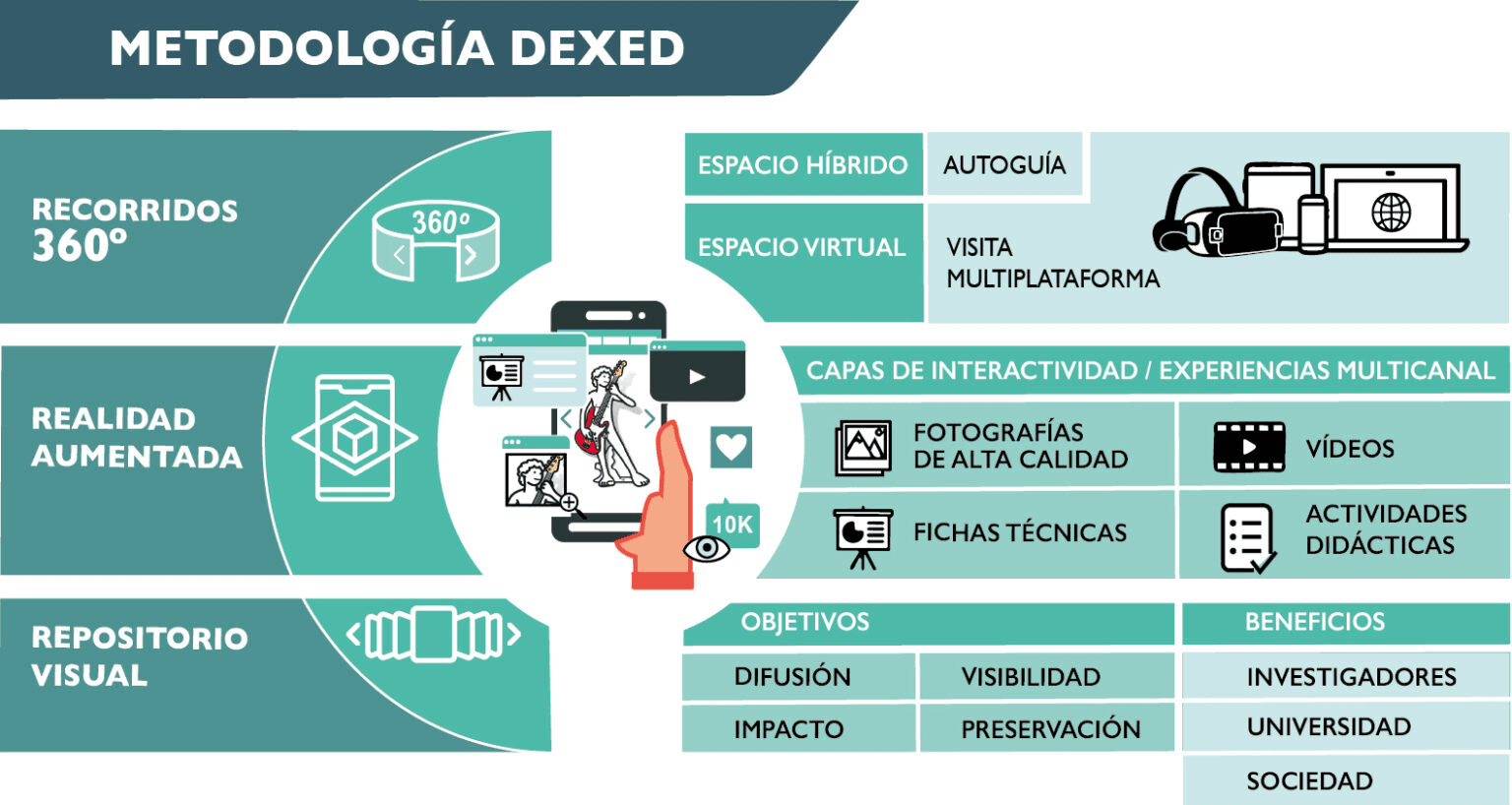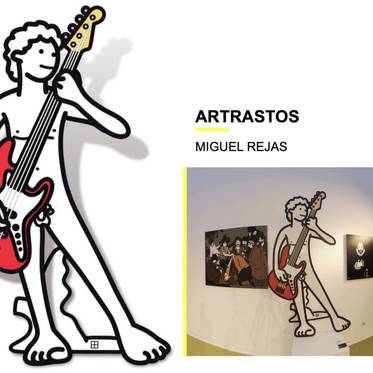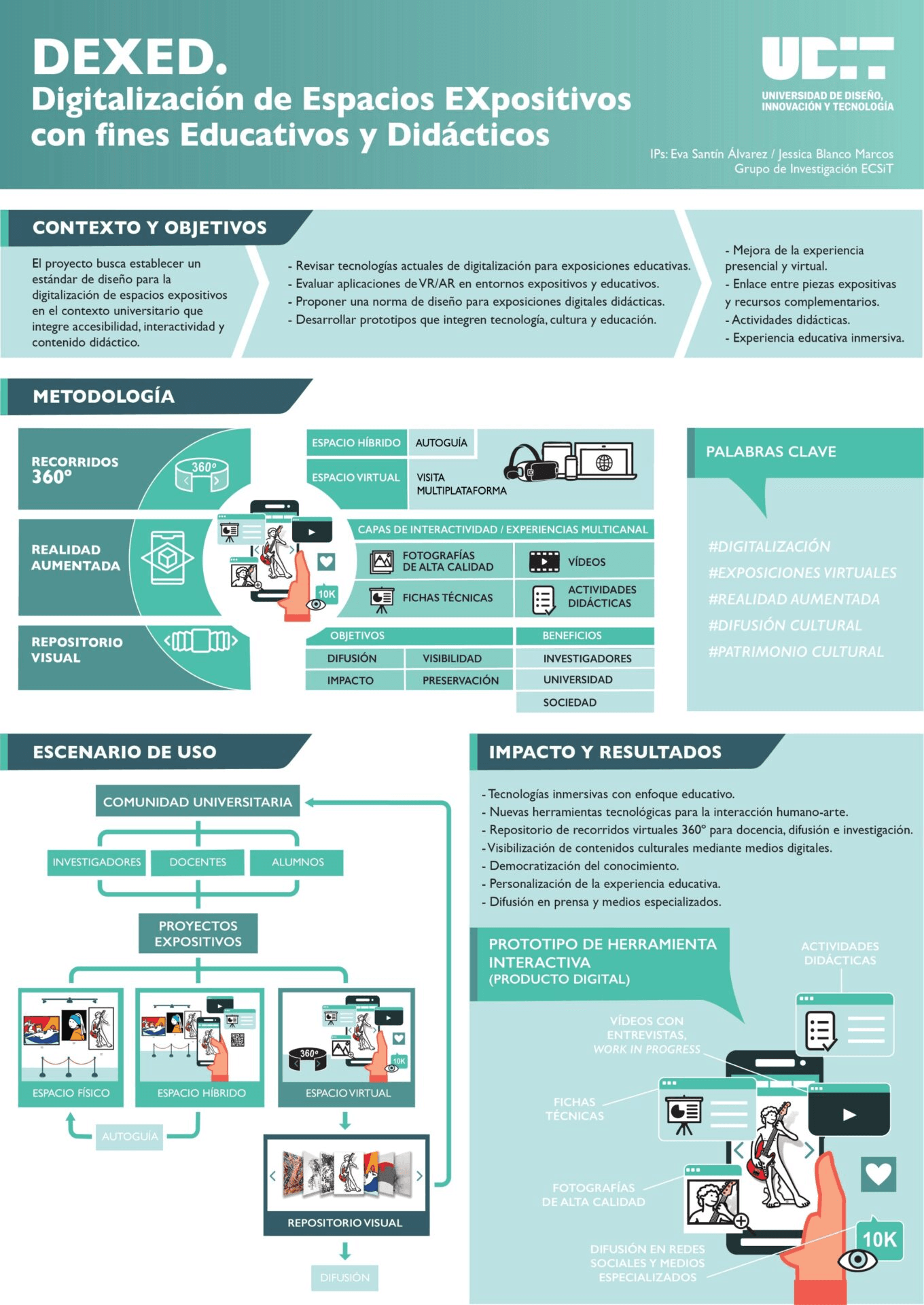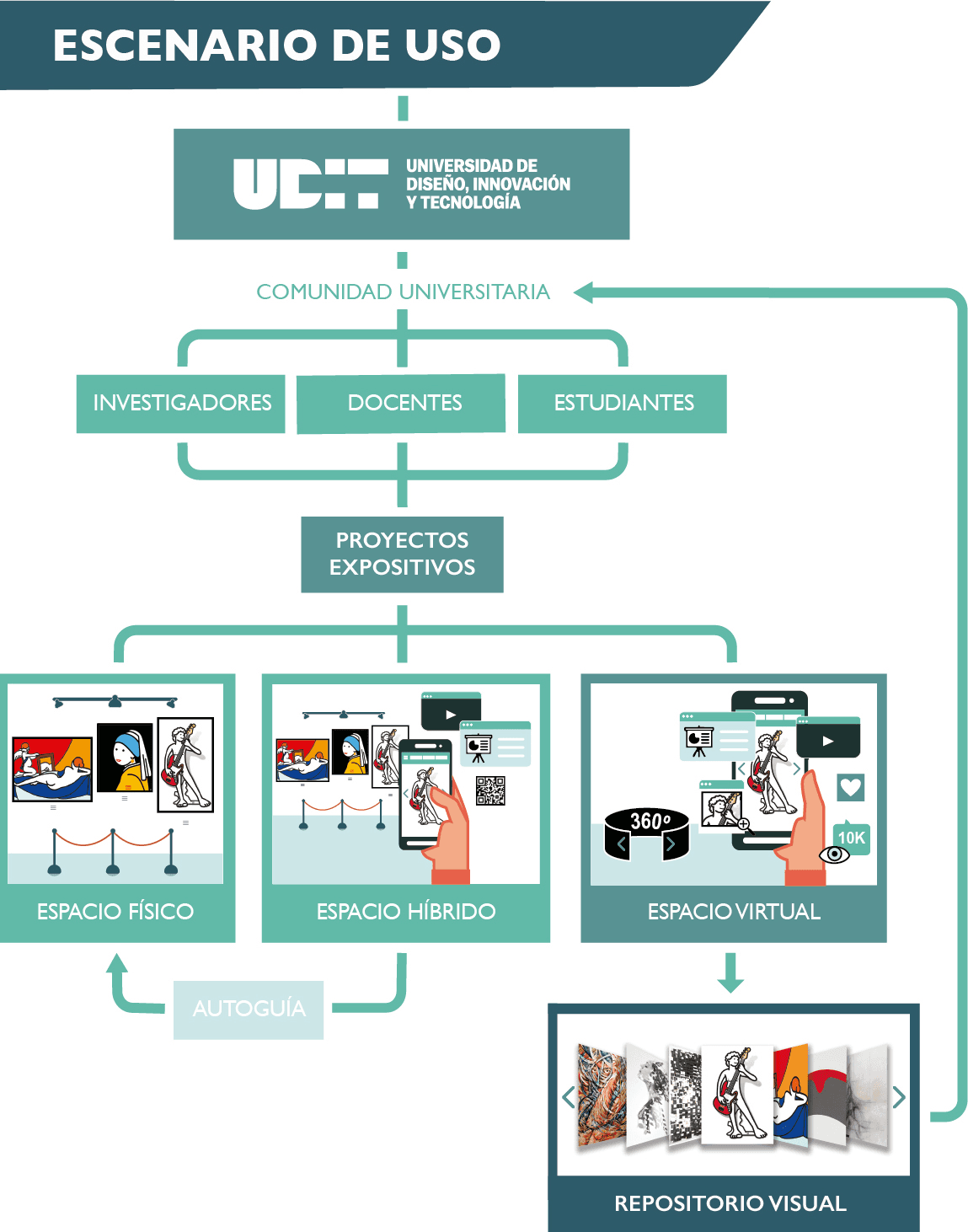Internal Project Digitisation of Exhibition Spaces for Educational and Didactic Purposes (DEXED)
Project title: Digitalización de Espacios Expositivos con fines Educativos y Didácticos (DEXED) / Digitization of Exhibition Spaces for Educational and Didactic Purposes.
Code: INC-UDIT-2025-PRO18
Project PI: Phd. Jessica Blanco Marcos (jessica.blanco@udit.es)
Phd. Eva Santín Álvarez (eva.santin@udit.es)
Objectives
Can you imagine enjoying a private guided tour of a cultural exhibition from the comfort of your own home?
The main objective of the DEXED project is to develop a design standard for the digitisation of exhibition spaces, enriching both the face-to-face and virtual experience. Through the integration of didactic and accessible content, DEXED seeks to transform the relationship between the public and the exhibited work, promoting an interactive, inclusive and dynamic exhibition model.
Other objectives
- Facilitate the extended virtual visit, which not only functions as a complement to the on-site visit, but also offers additional content and new forms of interaction.
- Design immersive educational experiences, integrating didactic activities that encourage active user participation and contextual understanding of the works.
- Define a proposal for a specific design standard for the digitisation of exhibitions, adaptable to different types of institutions and content.
- To give visibility and dissemination to artistic profiles within the UDIT community (researchers, teachers and students) through the creation of a visual repository.
Methodology
After gathering technical, technological and pedagogical information, workshops will be organised to train researchers in the use of technologies such as 360º cameras, creation of interactive spaces and virtual and augmented reality tools. Part of the process will be to define a design standard for the digitisation of exhibitions, focusing on the integration of educational content and accessibility.

Practical applications
- Cultural and artistic centres: Implementation of interactive and accessible virtual visits, integrating extended information on the works and personalised tours.
- Educational institutions: Creation of digital exhibition environments for learning, allowing the consultation of reference materials and training activities.
- Virtual visual repository: Registration of the artistic and exhibition activity of the university community (researchers, teachers and students).

Innovation and competitiveness
Advanced interactivity: Implementation of immersive environments that allow visitors to explore exhibitions in a dynamic and personalised way.
Universal accessibility: Application of inclusive design standards, facilitating the participation of audiences with different needs.
Adaptable standardisation: Creation of a methodology that can be replicated in different institutions, optimising digitisation processes and reducing costs.
Visibility and international projection: Positioning of UDIT as a benchmark in museographic innovation and cultural digitisation.


